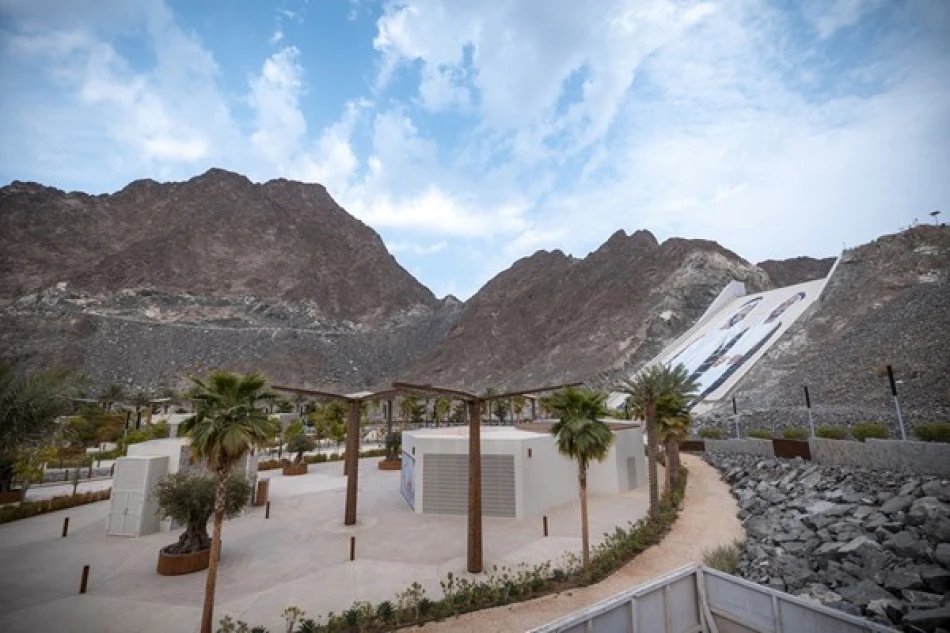
Unlock Sustainable Investment Opportunities in Hatta's Stunning Waterfalls Project
Dubai Hands Out Free Retail Spaces to Transform Hatta Into Tourism Powerhouse
Dubai is distributing 14 retail and restaurant spaces at the Hatta Sustainable Waterfalls project completely free to local citizens, marking an unprecedented move to boost regional tourism while creating economic opportunities for residents. The initiative, ordered by Sheikh Mohammed bin Rashid Al Maktoum, aims to transform the mountainous Hatta region into a world-class tourist destination through local entrepreneurship.
Strategic Tourism Investment with Social Impact
The free distribution of commercial spaces represents more than typical economic development—it's a calculated bet on community-driven tourism growth. Dubai Municipality is offering four restaurants, four retail outlets, and six food and beverage units spanning 750 square meters, all designed to serve the growing visitor traffic to Hatta's new attractions.
This approach mirrors successful tourism development models seen in rural areas of countries like Switzerland and New Zealand, where local ownership creates authentic experiences that attract international visitors while preventing economic displacement of residents.
Alignment with Dubai's Ambitious 2040 Vision
The project directly supports Dubai Urban Plan 2040 and the emirate's D33 economic agenda, which targets making Dubai one of the world's top three tourist destinations. By focusing on Hatta—historically a quiet mountain enclave—Dubai is diversifying its tourism portfolio beyond beaches and shopping malls toward adventure and eco-tourism.
The timing is strategic. As global travelers increasingly seek sustainable and authentic experiences post-pandemic, Dubai is positioning Hatta as an alternative to overcrowded urban attractions, potentially capturing market share from competitors like Oman's mountain tourism or Jordan's eco-lodges.
The Centerpiece: World's Largest Mosaic Waterfall
The Hatta Sustainable Waterfalls feature a 2,199-square-meter mosaic—officially the world's largest—depicting the UAE's founding fathers Sheikh Zayed and Sheikh Rashid. Constructed from over 1.2 million pieces of natural marble, the installation combines the country's hydroelectric infrastructure with cultural commemoration, creating a unique tourist draw.
The waterfall flows from Hatta's pumped-storage hydroelectric station, demonstrating how Dubai is integrating renewable energy projects with tourism development—a model that could influence similar projects across the Gulf region.
Market Implications and Regional Competition
For investors and tourism operators, Dubai's Hatta development signals several important trends. First, the UAE is serious about tourism diversification beyond traditional luxury offerings. Second, the government is willing to subsidize local entrepreneurship to achieve strategic tourism goals.
This puts competitive pressure on neighboring emirates and regional tourism destinations. Ras Al Khaimah's adventure tourism initiatives and Saudi Arabia's NEOM project face a more formidable competitor as Dubai leverages its established tourism infrastructure to expand into new segments.
Entrepreneurship as Economic Strategy
Bader Anwahi, Executive Director of Public Facilities at Dubai Municipality, emphasized that these commercial opportunities represent the first-ever investment openings in the Hatta Dam area. The focus on supporting local families and small businesses suggests Dubai is learning from tourism development mistakes elsewhere, where external operators often capture most economic benefits.
Citizens interested in these opportunities must apply through Dubai Municipality's business portal, with selection based on predetermined criteria—likely favoring applicants with relevant experience and sustainable business plans.
Sustainable Tourism Model for the Gulf
Dubai's Hatta project could become a template for sustainable tourism development across the Gulf region. By combining renewable energy infrastructure, cultural heritage, local entrepreneurship, and environmental conservation, the emirate is creating a replicable model that addresses common criticisms of Gulf tourism development.
The success or failure of this initiative will likely influence similar projects in Saudi Arabia's Vision 2030 tourism developments and Qatar's post-World Cup tourism strategy. If Hatta can demonstrate that community-owned tourism generates both visitor satisfaction and local economic benefits, expect similar programs across the region within the next five years.
 Layla Al Mansoori
Layla Al Mansoori







